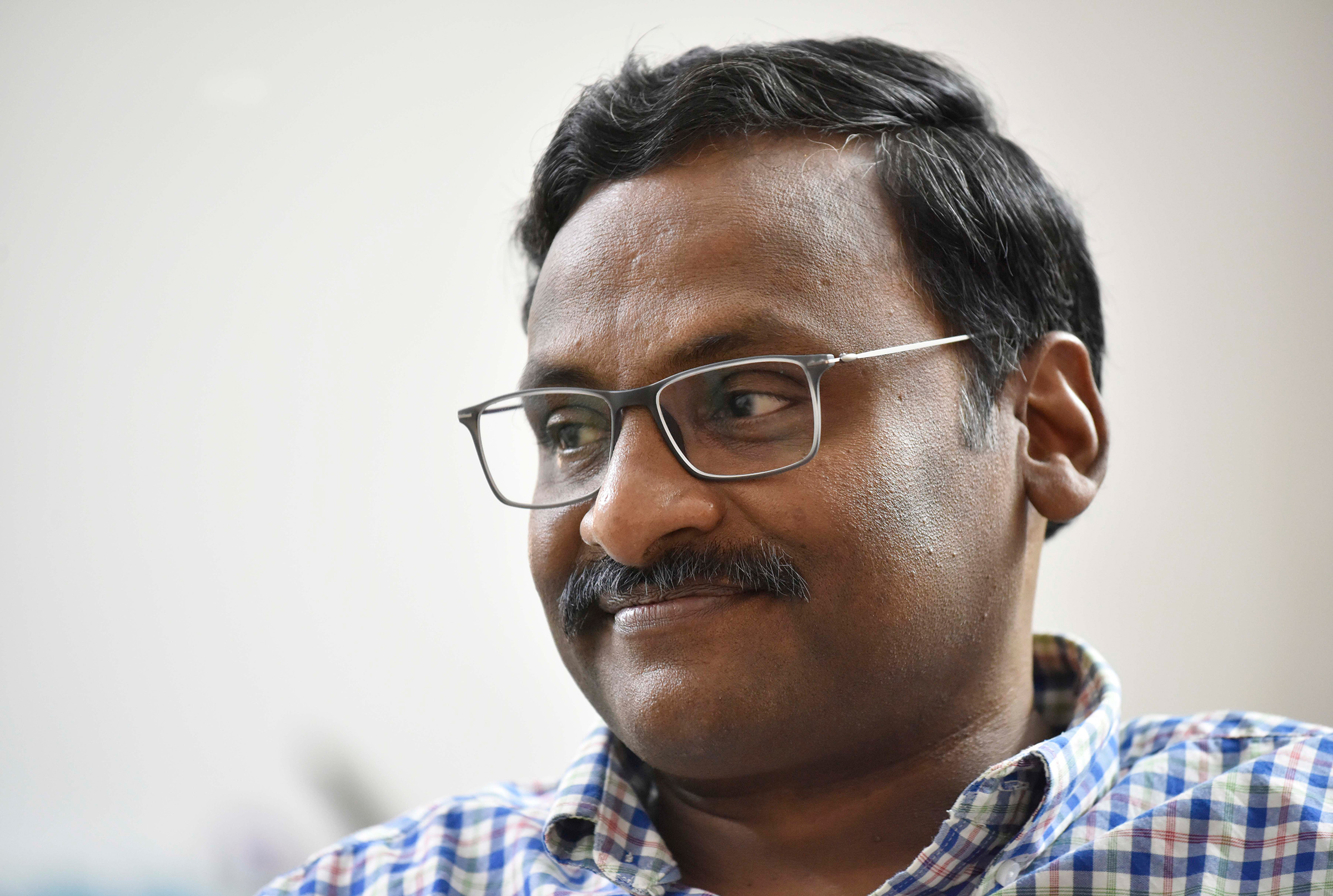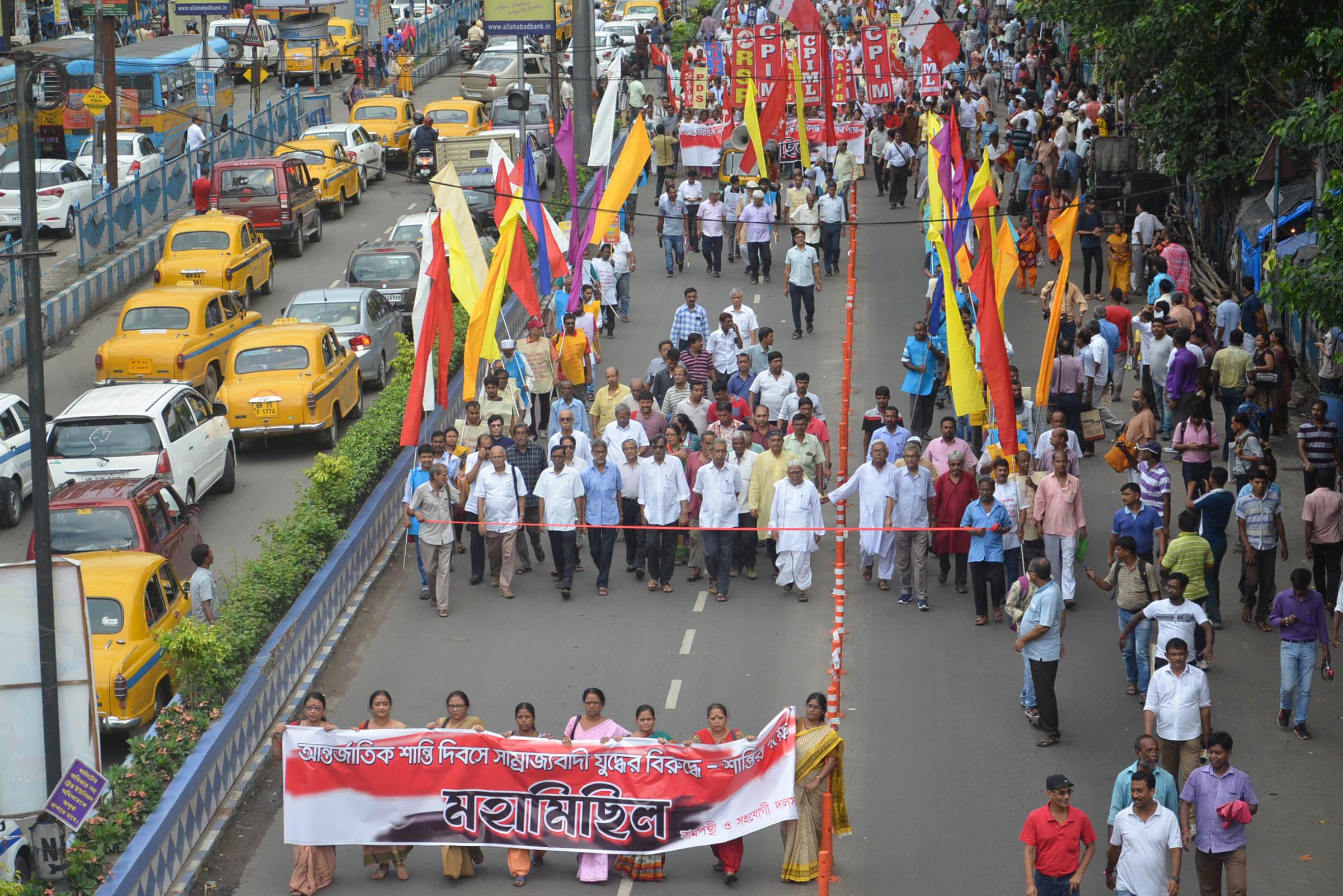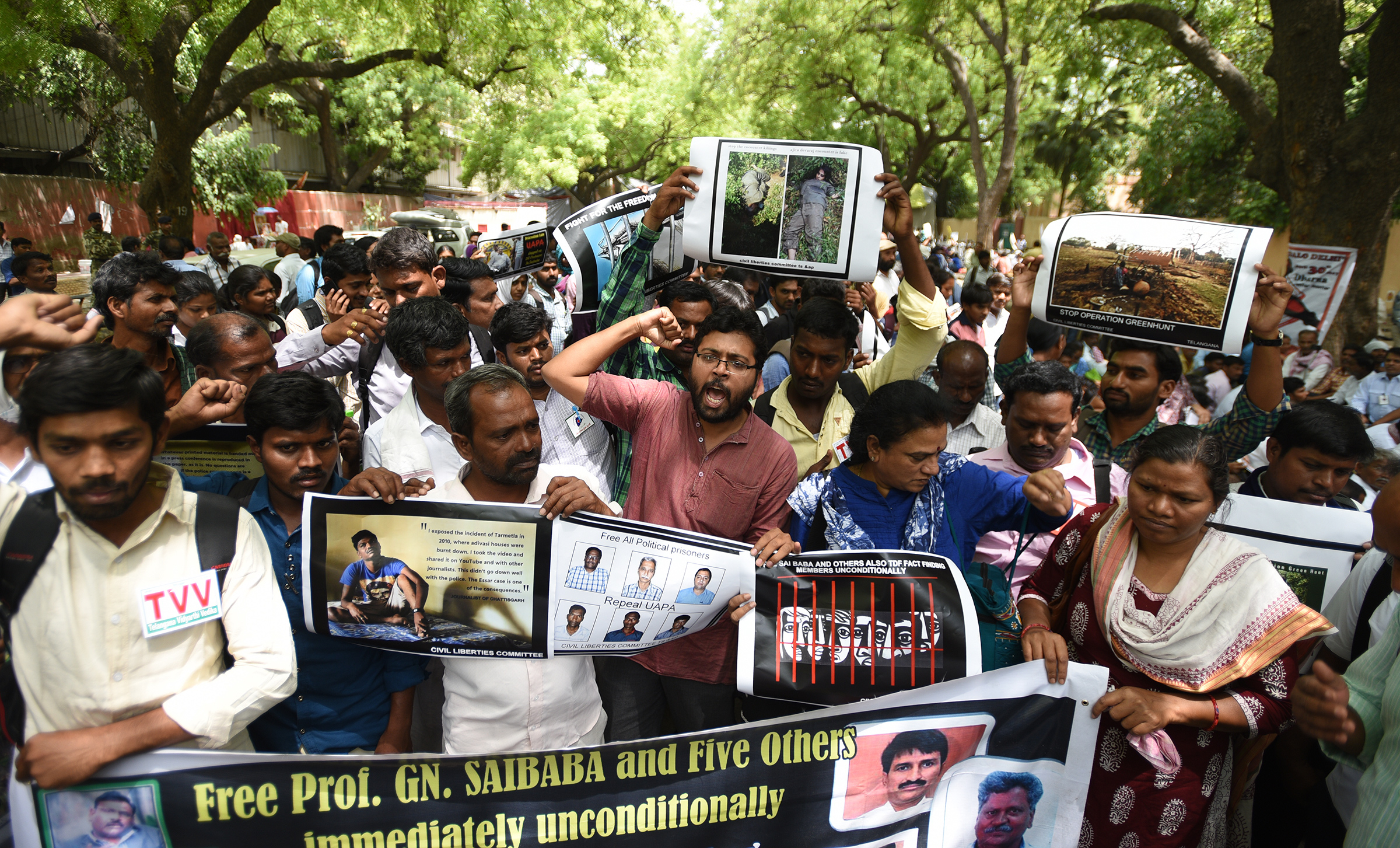In May 2014, in what looked like a scene from a movie, a van pulled in front of G.N. Saibaba’s car. The police, in plain clothes, dragged him out, then assaulted, blindfolded, and kidnapped the English professor on his way home from Delhi University’s campus in broad daylight. No warrant was issued and he wasn’t allowed to call his wife or lawyer. His wife, Vasantha, waiting for him to return home for lunch, found out about his abduction from an anonymous phone call. Within hours, Saibaba was flown out of Delhi and taken to the remote Aheri Police Station on the border between Maharashtra and Chhattisgarh, in central India. Here the district magistrate sentenced Saibaba—who contracted polio as a child and is wheelchair-bound—to prison, where he would spend the next 14 months in a small, egg-shaped cell in darkness.
What was Saibaba’s alleged crime?
According to India’s government, he and five others—university student Hem Keshavdatta Mishra; journalist Prashant Rahi; and Mahesh Tirki, Pandu Narote, and Vijay Nan Tirki, all members of the minority Adivasi communities—were charged with conspiring to “wage war against India” under the infamous Unlawful Activities (Prevention) Act (UAPA).

Whispers of Saibaba’s arrest were in the air long before he was abducted. Saibaba was the spokesperson for the Forum Against War on People, a coalition of writers, students, and concerned citizens who campaigned against the Indian government's Operation Green Hunt. While the official mandate of the operation—which began in 2009 and reverberates unofficially to this day—was to eliminate the Maoist Naxalite militants, it was in fact an all-out war on the Adivasi communities in the mineral-rich “Red Corridor” in central India. Over the past 14 years, Adivasi lands have been confiscated, entire villages emptied, and communities driven out as part of the military operation.
More From TIME
Saibaba was already being hounded prior to his arrest. The Delhi Police had raided his faculty residence on campus, searched its premises, and interrogated him on four separate occasions. In one of these raids, over 50 police and intelligence officers stormed into his home and detained his entire family, including his visibly frightened teenage daughter. Then, like in 2014, the police refused Saibaba access to his lawyer.
When police left Saibaba’s ransacked home after three hours, they had seized flash drives, hard drives, photographs, laptops, SIM cards, and cell phones. The “seizure list” resembled a reading list for social movements rather than items that would suggest a “conspiracy to incite violence” by a mastermind. It included an old copy of People’s March magazine, a booklet on the killing of Naxal leader Mallojula Koteswara Rao, or “Kishenji,” and material from magazines like Jan Pratirodh. In violation of procedural rules, police used plastic bags from the couple's kitchen instead of sealed evidence bags. When police finally returned some of their photos, one of Saibaba’s prized possessions—a photograph of him with Kenyan writer Ngugi wa Thiong’o—was missing. In an interview soon after, Saibaba joked: “They probably thought Ngugi’s a Maoist.” On second thought, they probably did.
Bombay's High Court granted Saibaba bail on medical grounds 14 months after his May 2014 arrest. (He was taken to hospital 27 times during this period, and his left hand became paralyzed.) Yet Saibaba's time behind bars would not end there. The Court’s Nagpur Bench canceled his bail in December 2015 and he returned to prison. On Oct. 14, 2022, the High Court acquitted Saibaba, but India's Supreme Court stepped in less than 24 hours later, and stayed the release order.

During the three-year-long trial against Saibaba and the other men, which ran from 2014 to 2017, the prosecution produced no real evidence. Of 23 witnesses presented before the court by the prosecution, 22 were police officers. The only civilian witness retracted his confession after claiming it resulted from torture. While Saibaba’s health deteriorated in prison, Rahi, the social activist and journalist, alleged that he, Mishra, Narote, and Mahesh Tirki were tortured in custody by investigating officer Suhas Bawache. Rahi writes: “All of us accused were tortured in the most inhuman[e] manner. Mr. Bawache personally used brute force against me and the others, violated our minds and body, abused us, tormented and harassed us all through the days and nights over several weeks of our Police Custody Remand.”
The prosecution alleged that Saibaba operated under "various aliases" and was a "kingpin" of the Maoist insurgents. Their case was wholly based on the so-called “confessions” extracted from Mahesh Tirki and Narote. Despite affidavits filed by both alleging brutal conditions under which the statements were made, the judge admitted them as evidence. The prosecution's other evidence consisted of letters, newspapers, umbrellas, pamphlets, books on Marxism, and videos seized during searches, whose legality the defense repeatedly challenged.
Many who witnessed the trial saw it as a farce. Saibaba and his lawyer Surendra Gadling had believed the courts would acquit him. But in an 827-page judgment on March 7, 2017, Saibaba and the five others were convicted under UAPA, the anti-terror legislation dating back to 1967 that has been increasingly used to stifle dissent. All received life sentences except Vijay Nan Tirki, who was handed a 10-year sentence.

Indian judges have been increasingly handing out indefensible judgments that run contrary to the law and the fundamental principles enshrined in the Constitution. Rather than interpret rights and principles in favor of citizens, they have become ideological foot soldiers and stenographers for an authoritarian state.
The vast powers granted under UAPA have always posed human rights concerns. But recent amendments have only amplified them, including most recently in 2019, when the burden of proof under UAPA was effectively shifted from the prosecution to the defense. The latest amendment also made it effectively illegal to hold certain political beliefs, especially those that question the Indian state.
In September 2022, the human rights group People’s Union for Civil Liberties (PUCL) published a damning report on how UAPA has been misused from 2009 to 2022, which also found that the number of cases brought forward under the anti-terror legislation has surged under Prime Minister Narendra Modi. Research conducted by FactChecker.in, India's first fact-checking initiative, echoed PUCL's findings, saying that the number of cases under UAPA rose 14% a year from 2014 to 2020.
Read More: Column: India’s Worsening Democracy Makes It an Unreliable Ally
Indeed, Saibaba is hardly the first scholar or human rights defender to be arrested under UAPA. Before him there was Dr. Binayak Sen, Soni Sori, Gaur Chakraborty, Sudhir Dawale, Arun Ferreira, and Kobad Ghandy, among others.
Yet Saibaba's ordeal marked a turning point. Saroj Giri, a political science professor at Delhi University, has written that the deep state "got greedier, more demanding" after capturing and killing Maoist leaders like Kishenji, and they set their eyes on "pigeons" like Saibaba. Mihir Desai, a defense lawyer, used the metaphor of a lion to capture that shift. "First, with the case of Binayak Sen and Saibaba, they tasted blood, and now they are going all out," he said.

It took us several years to research How Long Can the Moon Be Caged? Voices of Indian Political Prisoners. In looking at the growing authoritarianism of the Indian state, we understood that in order to make sense of the role that political prisoners play in shaping so-called democratic societies, we needed to look beyond individual cases of violence.
During our research, we detected an emerging pattern of state violence whereby all agencies of the state would collaborate to implement an ethnonationalist vision. The police, a complacent judiciary, and a subservient media each play a role in implementing and promoting a single narrative that allows perpetrators of heinous acts of communal violence to walk away, all while criminalizing the affected communities and those who call out such injustice.
In our book, we tell the story of a cruel state that is intolerant of criticism, dissent, or resistance, and uses disproportionate violence and collective punishment to target its opponents.
Yet the book is as much a chronicle of state violence as it is a celebration of resistance and dissent. Looking at India today, if there is any lesson to be learned from an authoritarian regime that presides over an "undeclared emergency" and no longer makes an effort at wearing the mask of democracy, it is that the seeds of hope and resistance cannot be killed. They may be invisible, even seem depleted for a time. But they will eventually find a way to return and bloom.
This essay is adapted from How Long Can the Moon Be Caged? Voices of Indian Political Prisoners, a new book that debuted on Aug. 20.
More Must-Reads from TIME
- Donald Trump Is TIME's 2024 Person of the Year
- Why We Chose Trump as Person of the Year
- Is Intermittent Fasting Good or Bad for You?
- The 100 Must-Read Books of 2024
- The 20 Best Christmas TV Episodes
- Column: If Optimism Feels Ridiculous Now, Try Hope
- The Future of Climate Action Is Trade Policy
- Merle Bombardieri Is Helping People Make the Baby Decision
Contact us at letters@time.com
